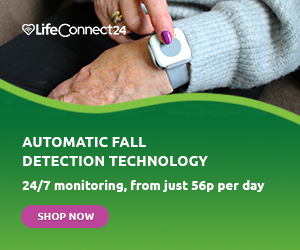On December 2, every year since 1988, people have come together to mark World Aids Day.
Today LifeConnect24 puts together a little guide to this day. We discuss why it so important to understand more about the condition and how it affects those diagnosed with it.
What is World Aids Day?
World Aids Day was the world’s first global health day and has now been running for 33 years. The purpose is for people around the globe to show their support for people living with HIV and AIDS. Whilst also remembering those who have lost their lives.
It is also to help spread awareness of the condition to promote a better understanding of the deadly condition.
This year’s campaign is based around the “Not Retro, Just Wrong” slogan. It has been turned into the hashtag: #HIVNotRetro! This is based on the stigma that is associated with HIV.
The charity behind the day provide red ribbons for people to wear. Whilst money is also raised for the National Aids Trust through fundraising events and gatherings. The main aim is to also remind the government that HIV has not gone away. There is a need to raise money, awareness and education of the virus.
How many people are affected by HIV/Aids?
Here in the United Kingdom, there are over 100,000 people living with HIV and it is estimated that there are around 34 million cases worldwide. The virus was only discovered in 1984 but it has claimed the lives of more than 35 million people.
In fact, each year there are a further 6000 people diagnosed here in the UK.
What is Aids?
Aids is the final stage of the HIV infection. HIV, Human Immunodeficiency Virus, is an infection that attacks immune systems and weakens ability to fight off infections and disease.
During these final stages your body is no longer able to fight life-threatening infections.
How do you get HIV?
HIV is commonly caught through unprotected sex. Although, it can also be caught by sharing needles and genetically through an HIV-positive mother to her child during pregnancy, childbirth, and breastfeeding.
According to Public Health England, 95% of those diagnosed with HIV in the UK in 2013 had done so as a result of sexual contact.
The virus can be found in body fluids of an infected person. Although it cannot be transmitted through sweat or urine.
Treatment for HIV/AIDS
Currently, there isn’t a cure for HIV. Although there are now many treatments available that can help sufferers to live longer and healthier lives. Treatments, along with early diagnosis, can also mean that people will not go on to develop AIDS.
HIV is able to develop resistance to a single HIV drug very easily, but taking a combination of different drugs makes this much less likely. Medication, known as antiretrovirals, work by stopping the virus replicating in the body, allowing the immune system to repair itself and preventing further damage.
Doctors also encourage people with the virus to take part in regular exercise, quit smoking, eat a healthy diet and to have yearly flu jabs in order to minimise the risk of illness.
Without treatment, the immune system will become severely damaged and life-threatening illnesses such as cancer and severe infections can occur.
Preventing HIV/AIDS
The best way of preventing HIV is to always have safe sex, by using a condom. You also never share needles or injecting equipment with others.
When in a relationship it is vital that you know not only your own HIV status but also that of your partner – this way the condition will not spread. For people with HIV, effective antiretroviral therapy significantly reduces the risk of passing HIV to sexual partners.
Tests for HIV/AIDS
If you think that you have been exposed to the virus you should seek medical advice straight away. The only way you will know if you have the condition is by having the HIV Test. The test involves testing a sample of your blood or saliva for signs of the infection.
The NHS would like to remind you of the following:
- Emergency anti-HIV medication called PEP (post-exposure prophylaxis) may stop you becoming infected if started within three days of possible exposure to the virus, and starting it as soon as possible is recommended
- an early diagnosis means you can start treatment sooner, which can improve your chances of controlling the condition
- HIV tests may need to be repeated one to three months after potential exposure to HIV infection (this is known as the “window period”), but you shouldn’t wait this long to seek help
- you can get tested in a number of places, including your GP surgery, sexual health clinics and clinics run by charities such as the find HIV testing services near you
- clinic tests can sometimes give you a result in minutes, although it may take a few days to get the result of a more detailed blood test
- home-testing or home-sampling kits are available to buy or order online or from pharmacies – depending on the type of test you use, your result will be available in a few minutes or a few days
If the test suggests that you may have HIV, a further test will take place in order to confirm the result. You would then be referred to a specialist HIV clinic for more tests and treatment options.
Sources – NHS Choices / ‘WAD’ Website


